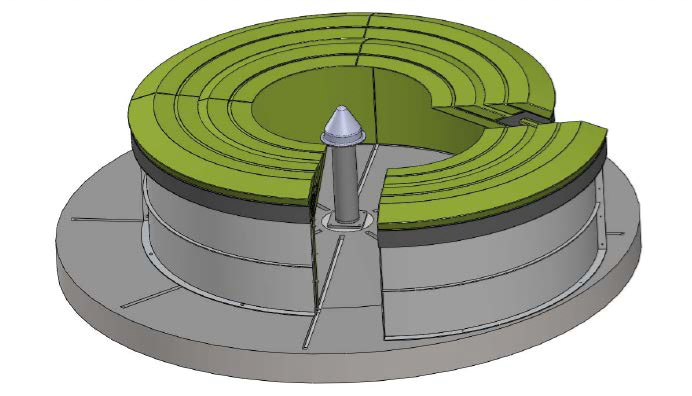Shield for controlling and minimising interference at GNSS geodetic stations
| 537 - Abstract: |
| ESA has developed a shield that can be retrofitted to existing GNSS (Global Navigation Satellite Systems) geodetic receivers that allows interference to be controlled, minimised, and even eliminated. This solution could benefit virtually all GNSS geodetic networks worldwide and ESA is looking for partners who would be interested in licensing and implementing the design. |
Description:
One of the biggest issues that affects the performance of GNSS is the inability to control multipath and interference in the environment close to the antenna. To this end, ESA has developed a shield to tightly control both the multipath and interference issues commonly observed at GNSS ranging stations.
This solution provides the user with the ability to control the local radio frequency (RF) environment without requiring a re-design of the GNSS geodetic receiver, thus providing savings both in terms of cost and complexity.
The shield is based upon the principle that the RF-environment local to the antenna can be modified and controlled by having the receiver embedded within a geometrical structure. This structure is designed such that unwanted signals, both multipath and interference, are either absorbed completely or highly attenuated. The isolation of the receiver is achieved by utilising a combination of reflection, diffraction, and absorption. The exact configuration is determined by the angle of arrival, with respect to the local horizon, of the unwanted signals.
The mechanical design of the shield allows for it to be operated in harsh weather conditions such as; heavy rain, high winds, and even snow without the performance being adversely affected.
Innovations and advantages:
- Ability to retrofit to existing receivers without requiring extensive redesign
- Reduced cost of total systems
- For a GNSS service based on a single GNSS geodetic station, this shield would allow a given level of performance to be achieved with a simpler GNSS receiver.
- For a GNSS service based on multiple GNSS geodetic stations, this shield would allow a given level of performance to be achieved with a reduced number of stations (using the same original GNSS receiver).
- Ability to operate in harsh weather conditions
Domain of application:
- Virtually all GNSS geodetic networks worldwide could benefit from this shield
- GNSS commercial positioning service providers
- Research institutes
- Developers of next generation GNSS services and solutions




